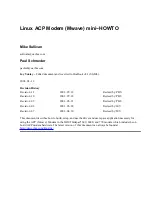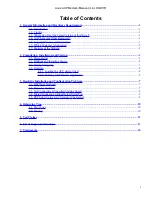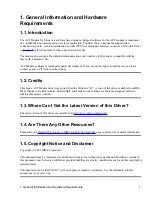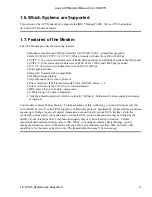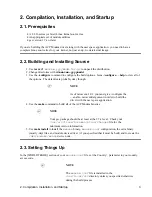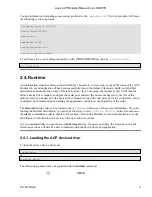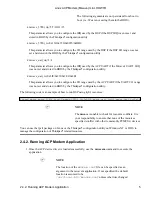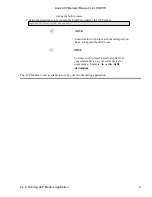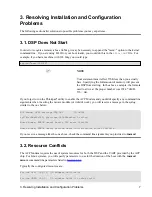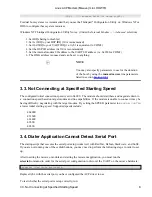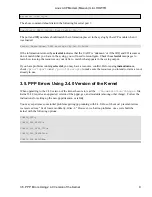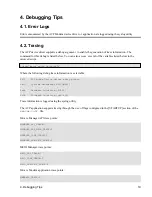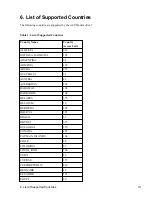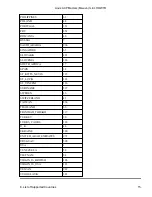
IRQ 4, I/O address 0x3f8 (if using ttyS0)
For dual boot systems we recommeded that you use the Thinkpad" Configuration Utility on Windows NT or
DOS to configure these system resources.
Windows NT Thinkpad Configuration Utility Notes: (Under the Internal Modem −−> Advanced selection)
Set IRQ sharing to disabled
1.
Set 1st IRQ to your DSP IRQ (10 is recommened)
2.
Set 2nd IRQ to your UART IRQ (i.e. ttyS1 is equivalent to COM2)
3.
Set the DSP I/O address (0x130 is recommended)
4.
Set the internal modem I/O address to the UART I/O address (i.e. 0x2f8 for COM2)
5.
The DMA address is unused and can be set to anything.
6.
NOTE
You may also specify parameters to use for the duration
of the boot by using the insmod mwave line parameters
listed in section
Section 2.4.1
.
3.3. Not Connecting at Specified Starting Speed
The configured initial connection speed is set to 64000. The modem should start there and negotiate down to
a connection speed based on target modem and line capabilities. If the modem is unable to connect it may be
having difficulty negotiating with the target modem. Try setting the SPEED parameter in
mwavem.conf
to
a lower initial starting speed. Supported speeds include:
64000
•
33600
•
14400
•
9600
•
2400
•
3.4. Dialer Application Cannot Detect Serial Port
The startup script that executes the serial port setup works well with Red Hat, Debian, Slackware, and SuSE.
If you are not running one of these distributions, you may need to perform the following steps in order to set
up.
After inserting the mwave.o module and starting the mwavem application, you must run the
setserial command in order for the serial port configuration to discover the UART on the mwave hardware:
setserial /dev/ttySx autoconfig
Replace ttySx with the serial port you have configured the ACP driver to use.
To test whether the serial port is setup correctly, run:
Linux ACP Modem (Mwave) mini−HOWTO
3.3. Not Connecting at Specified Starting Speed
8

